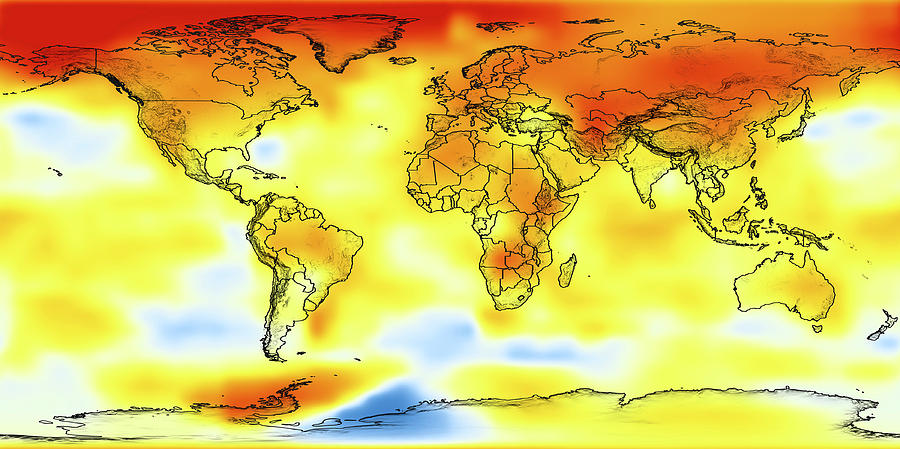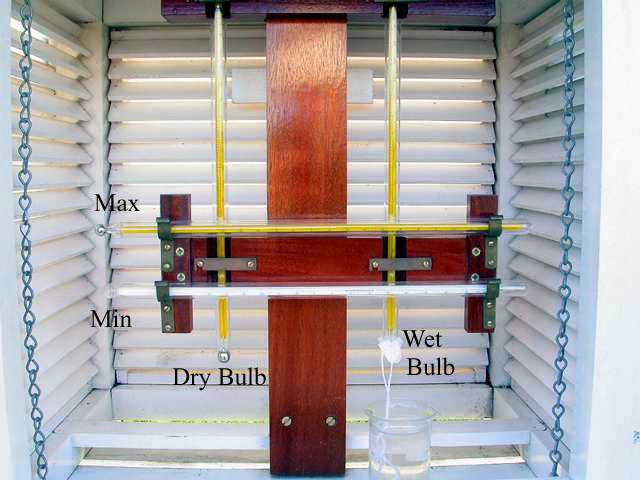
What is temperature?
Temperature is a measure of the heat, or average kinetic energy, of molecules in a substance. It is one of the most important weather and climate parameters and determines the heat flow between two different areas of objects. Temperature controls biological activity, the phase state of water and many other physical processes. As discussed in an earlier note, air temperatures around the world are not evenly distributed. The image below depicts this uneven temperature distribution around the globe. Note how the northern Hemisphere (which has a greater area of land) is much warmer than the southern Hemisphere (which has a smaller area of land).

How is temperature measured?
Temperature is measured with thermometers that can be calibrated to a variety of scales. While most countries use the Celsius scale, some still use Fahrenheit. Air temperature is measured with thermometers. Thermometers consist of a glass rod with a very thin tube in it. The tube contains a liquid that is supplied from a reservoir, or “bulb,” at the base of the thermometer. Sometimes the liquid is mercury, and sometimes it is red-coloured alcohol. As the temperature of the liquid in the bulb rises, the liquid expands. As the liquid expands, it rises up in the tube. The tube is marked with a scale, in degrees Fahrenheit or in degrees Celsius. It is important that the thermometer is kept in the shade at all times. Nowadays, air temperature is measured using automatic sensors.

Some global temperature records
- The highest temperature: Recorded at 56.7 °C on 10 July 1913 in Furnace Creek, California, United States.
- The coldest temperature: Recorded at -89.2 °C on 21 July 1983 at the Soviet Vostok Station in Antarctica.


0 comments
Write a comment